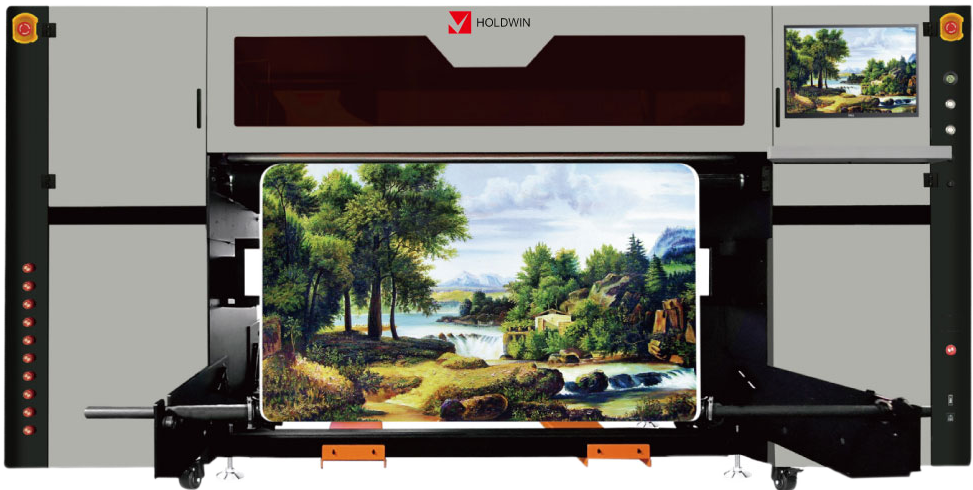
Fine art reproduction has long been a meticulous craft, requiring skill, precision, and an understanding of both artistic intent and material science. As the digital era transforms industries worldwide, fine art reproduction is no exception. Digital printing technologies, once primarily used in commercial and textile printing, are now providing artists, galleries, and collectors with unparalleled tools to replicate masterpieces with stunning accuracy and vibrancy. HOLDWIN, a global leader in textile and digital printing, is at the forefront of this revolution, offering cutting-edge solutions tailored to the art world.
Digital printing technologies, particularly those using advanced inkjet systems, are transforming how fine art is reproduced. Technologies like UV flatbed printing allow for the accurate replication of textures and color gradients, mimicking the nuances of brushstrokes and surface variations. Sublimation and heat transfer printing methods, popular in textile applications, have also been adapted for printing on unconventional media like metal and wood, expanding creative possibilities.
Key benefits include:
UV printing, particularly roll-to-roll and flatbed systems, excels in fine art reproduction. This technique involves curing the ink with ultraviolet light, which results in sharp details and durable prints. Its ability to print directly onto rigid substrates makes it ideal for gallery-quality pieces.
Sublimation printing is a go-to method for fabric-based art reproduction, ensuring long-lasting vibrancy. By transforming ink into gas that embeds into the substrate, it creates prints that are resistant to fading. HOLDWIN’s innovative sublimation printers are a testament to this, offering exceptional results for both art and textile applications.
Direct-to-Film (DTF) and UV DTF printing bring flexibility to personalized art projects. These methods allow for intricate designs and vibrant colors on diverse materials, catering to the growing demand for bespoke art solutions.
The choice of substrate plays a pivotal role in fine art reproduction. Each material interacts differently with inks, impacting the final result. For instance:
HOLDWIN’s expertise in textile printing ensures that customers receive guidance in selecting the best materials, ensuring durability and aesthetic appeal.

Despite its advantages, digital printing in fine art reproduction faces challenges:
Customer Review:
“I was amazed by the quality of my art reproductions using HOLDWIN’s printers. The color fidelity and texture were so precise that my clients couldn’t distinguish them from the originals!” – Emma T., Fine Art Studio Owner
HOLDWIN’s commitment to innovation positions it as a leader in digital printing for fine art reproduction. By leveraging decades of expertise and staying ahead of technological trends, HOLDWIN delivers solutions tailored to global markets. The brand’s rapid product development and personalized customization options make it the preferred choice for artists and textile manufacturers alike.
Our vision extends beyond printing technology. HOLDWIN aims to bridge the gap between art and technology, empowering creators with tools that bring their visions to life on a global scale.

Digital printing has redefined the possibilities of fine art reproduction, blending technology with artistry to create stunning replicas that honor the original works. As a global leader, HOLDWIN remains dedicated to innovation, offering state-of-the-art solutions that meet the unique needs of artists, designers, and manufacturers. Together, we are shaping the future of art reproduction—one masterpiece at a time.
References:
Would you like to explore any specific section further?

Zhiyu is passionate about good products, good services, and good prices to let consumers know that choosing us is the right choice! For partners and end customers, we will provide one-on-one considerate smart services and provide you with more high-quality procurement solutions.